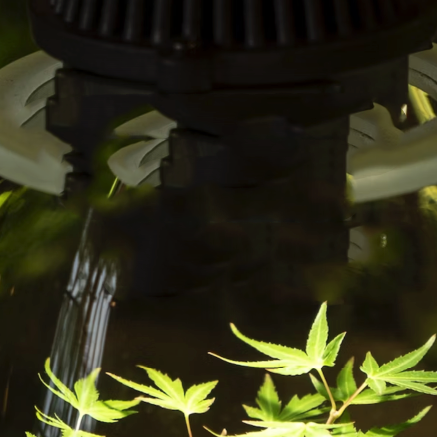Part 2: Why Do Plants Actually Need Light?
By understanding why plants need light in order to grow, you will become more able to make decisions as to which lighting products best suits your needs.
So, plants use light in a process called photosynthesis, which is just a long word to describe the process a plant follows in creating its usable energy storage form (sugar) from light.
To further explain how this process contributes to the life of a plant we can compare a plant to a human being. Although our bodies require a constant fuel source, we don't have to constantly eat in order to stay functional. We are able to eat when food is available and store this energy as fat, which then serves as the fuel source.
Plants on the other hand undergo photosynthesis to create sugar which in turn functions as the energy source of the plant. This is why if a plant is kept in complete darkness for a short period of time it can survive quite happily without photosynthesis. But when sugar levels fall and the plant cannot photosynthesise, it begins to die, much like how we could survive a day without eating a meal but after an extended period of not eating our bodies would be unable to function.
The Technical Bit (if you’re interested)
Photosynthesis is a bio chemical reaction between carbon dioxide and water which produces sugar and oxygen. In order for this process to happen, plants use two main bands of wavelength: 425-450nm and 650-700nm. This means that much of the light spectrum is not used in this process so measuring the level of visible light is not necessarily a useful endeavor.
Wikipedia (unsurprisingly) has a lot of information about photosynthesis: https://en.wikipedia.org/wiki/Photosynthesis
As mentioned in part 1 of this series we've got our hands on a specialist piece of equipment that shows us the amount of light emitted by a bulb that can actually be used by a plant for photosynthesis.
What is the Purpose of Our Experiment?
We are aiming to provide our customers with an answer as to whether LED grow lights are a worthwhile purchase. Instead of throwing around opinion, we want to back up our statements with quantifiable evidence.
It measures the amount of photons of light (that are usable for photosynthesis) that hit a given area within a given time.
The Li-Cor meter, when connected to the sensor, gives a reading of the amount of photons in “micromoles”. A mole is a standard scientific unit of measurement of the “amount” of something. A mole is defined as approximately 6.022 x 10^23 elementary entities. A photon is an elementary entity so a mole of photons is 6.022 x 10^23 photons.
Now that is a LOT of photons! In fact it is too big
The units of measurement are PPFD which stands for Photosynthetic Photon Flux Density. Quite a mouthful! In plain English this means is that it is a measurement of the amount of moles of plant usable photons per second that hits an area of 1 square metre.
A higher level of PPFD means more plant usable photons per second are hitting the 1 square metre area. This gives us a very realistic measurement of how effective for growing plants a particular lamp will be. The next part of this series is in production and we'll be showing you how the experiment is going to be set up.
In the meantime, why not take a look at our Facebook page and see what our team has to say.

